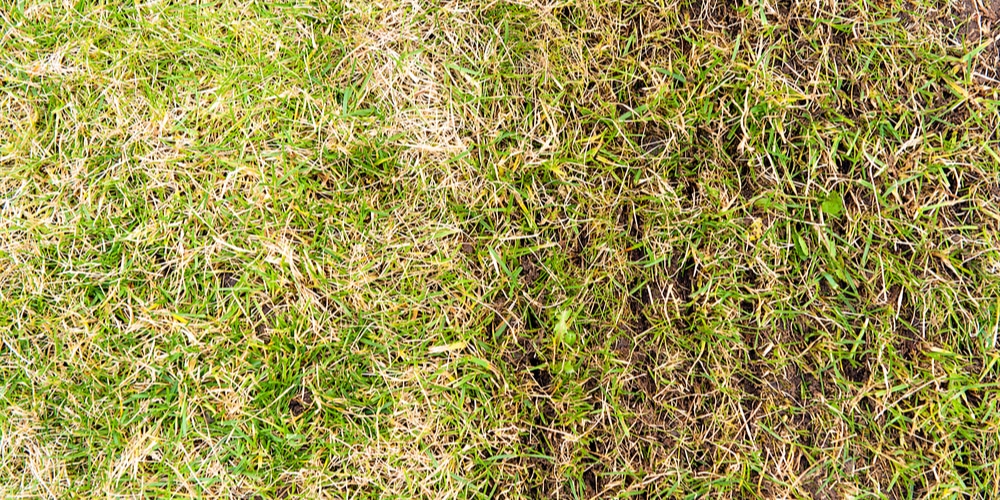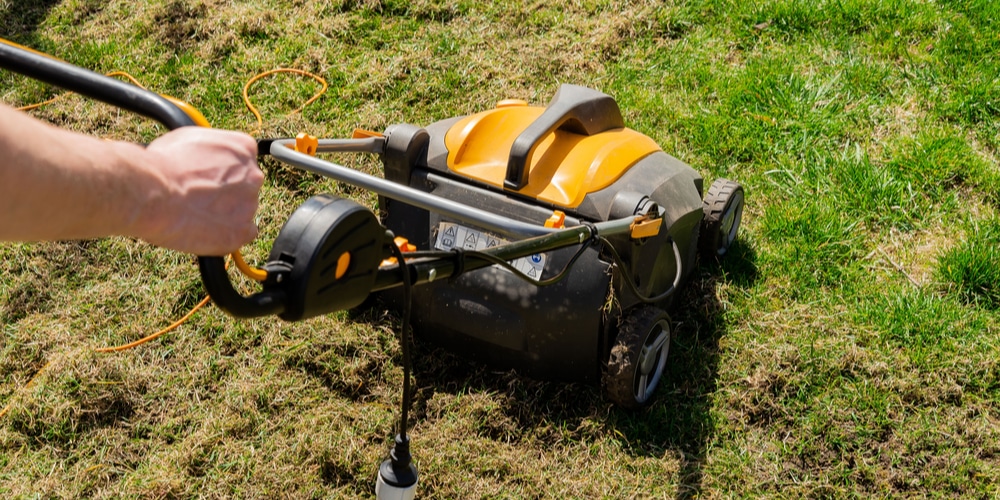If you like taking care of your lawn and you often read lawn care tips from different sources, you may have run into the term “lawn scarification.” Now, you simply can’t ignore the question “What is lawn scarifying?” that keeps ringing in your mind.
Well, if you stick around, you’ll get to know everything there is to lawn scarifying.
What is lawn scarifying?

In simple terms, lawn scarification is a lawn care practice that helps you to remove organic matter such as thatch and dead grass from your lawn, specifically from around the base of the grass plants.
The organic matter is known as thatch, and it is the spongy layer of living and dead grass, roots, and other debris that lies between the green part of the plant and the soil surface. A scarified lawn looks terrible after its just been completed, but in time the health of your grass will improve.
Why is it important to scarify?

While a certain amount of thatch is good for your lawn because it provides protection and insulation, too much thatch can be detrimental.
An excess amount of thatch can cause the following problems:
1. Shallow rooting of the grass
Since thatch forms a barrier between the soil and the green part of the plant, it acts as a sponge and absorbs water meant for the roots.
This also means that any lawn feed or fertilizer that you apply will be trapped by the thatch. As a result, the roots will have to grow in the thatch region to reach the nutrients, making them shallow and weak.
2. Increased susceptibility to drought and heat stress
When summer kicks in and the heat is on, the thatch will keep drying rapidly. And given that the roots will be growing in the thatch, they will also be more susceptible to drying out.
In the end, the grass may start turning brown. In extreme cases, it might reach the point of no return and die.
3. Pests, moss, and diseases
Excess thatch is the perfect breeding ground for pests, moss, and diseases. The damp and shady conditions are ideal for some pests, as well as for the growth of moss. At the same time, fungal diseases can also take hold more easily.
Scarification can solve your problem
When you scarify your lawn, you are essentially removing the thatch layer. This will allow water and nutrients to reach the roots more easily, making the grass stronger and healthier.
In addition, scarification will also get rid of any moss or weeds that might be growing in the thatch layer. As a result, your lawn will be healthier and more eye-pleasing.
What tools will you need?
The most ideal tool for your scarification process will depend on the type of scarification that you want to do. Below are the types of scarification that you can do and the tools for doing that.
1. Raking
For raking (light scarification), you can use a manual scarifier or a spring-tine rake. These two types of tools will help you to remove the thatch layer without much damage to the grass.
It’s best to use this type of scarification during the spring and autumn.
2. De-thatching/scarifying
This is the harshest form of scarification and is usually done with a dethatcher. This tool will essentially tear out the thatch layer from your lawn, which can cause some damage to the grass in the form of thinning it out drastically.
However, this type of scarification is necessary if the thatch layer is very thick. It’s best to use this during autumn, September being the best month. That’s in consideration that you may need to reseed your lawn after de-thatching.
3. Verticutting
This method of scarification is basically vertical mowing and is done with a verticutter. Verticutting prunes the roots of lawn grass, which in turn will force the plant to produce new growth.
At the same time, it will also help to remove the top thatch layer by cutting into it.
As the most gentle form of scarification, verticutting can be done every once a week or once in two weeks. The best time to do verticutting is from April to September.
Keep in mind, however, that verticutting is seldom considered an ideal lawn care method for home use. It’s seen as more of a professional lawn care practice for controlling weed grasses and thatch in sports turf.
However, there are standalone domestic verticutters available and some gardeners prefer to do verticutting on their own lawns.
So, which type of scarification is best for you?
The answer to that will depend on a couple of factors such as:
1. The amount of time that you have
2. Your knowledge level
3. Size and type of your lawn
4. Degree of commitment that you have towards lawn care
5. Your budget
If you want to keep things easy enough, then raking (light scarification) every spring and autumn is most likely your best bet. It’s the simplest form of scarification and doesn’t require too much time or effort.
You can combine raking with scarifying for a more thorough job. Ideally, you just have to scarify once a year or once every two years in the autumn.
Also, if your lawn is small, you can choose to do it manually using a manual scarifier and springbok rake to save on cash.